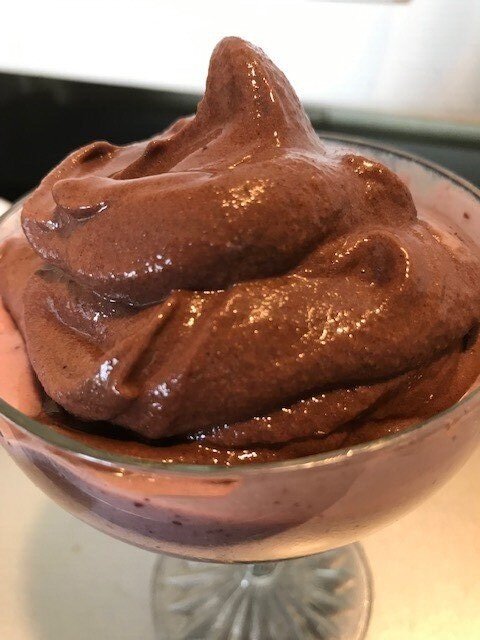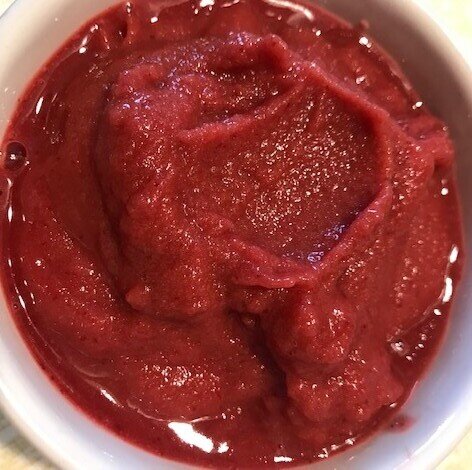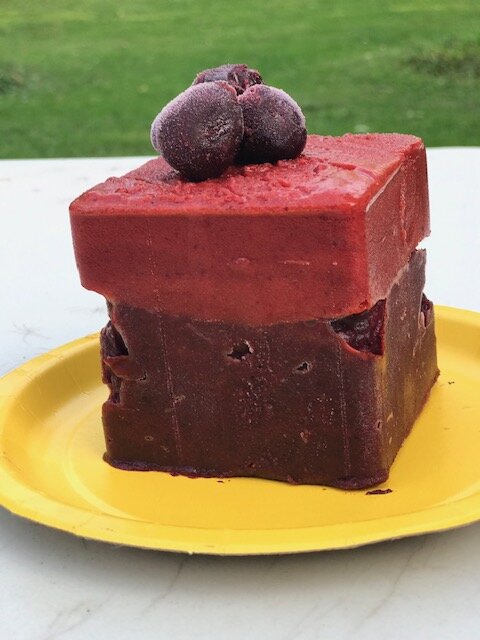When a local ice cream stand opens for the season, that’s when spring officially begins in my Northeast Indiana hometown of Fort Wayne. Ice cream is more than a confectionery treat; it symbolizes happy memories of summer.
However, conventional ice cream has a not-so-happy side to it: depression.
You are 51 percent more likely to develop depression if you eat even just two servings a week of fast food, commercial baked goods, or sweets . . .and the risk is even greater if you consume more. (1)
If you are craving ice cream, there’s a much healthier and cheaper way to have it. Simply buy ripe bananas (one of the most inexpensive fruits available!), peel and freeze them. Put slices of frozen bananas in a high-speed blender and add enough almond milk to make a smooth and creamy ice cream. Then add flavorings such as frozen berries, dark sweet cherries, maple or vanilla extract, or cacoa powder—or a combination of flavors. (My husband and I like cherry-chocolate ice cream. I also love red raspberry with chopped walnuts.)
If you prefer a tangy sorbet, mix frozen, dark sweet cherries with equal amounts of frozen pineapple chunks in a high-speed blender. Add enough water to make it smooth and creamy.
The sky is the limit with creating flavors.
Enjoy!
Add a ripe avocado and dark cocoa powder for a fudgy, Gelato-like ice cream.
Guests love it!
Frozen black raspberries added
Frozen cherries added
Sorbet: frozen, dark sweet cherries combined with equal parts of frozen pineapple chunks
You may also combine flavors. I started with a layer of chocolate fudge banana “nice cream” and let it harden for two hours in the freezer. Then I added a layer of maple/walnut banana “nice cream,” and allowed it to harden for two hours. (Set out at room temperature for 10 minutes before serving.)
This is a layer of blueberry/pineapple sorbet on the bottom, and a layer of cherry/pineapple sorbet on the top. (Always allow a layer to harden for an hour or two in the freezer before adding another layer.)
1 Joel Fuhrman, M.D., Eat for Life, (New York: HarperCollins Publishers, 2020), 198.
Emily Boller, wife, mother, artist, and author is on a mission to create expressive works of art in her lifetime; and to bring awareness to the potentially harmful traps of diet-wellness culture.
In her free time, she loves to chase sunrises, grow flowers and vegetables, and can homemade soups.








